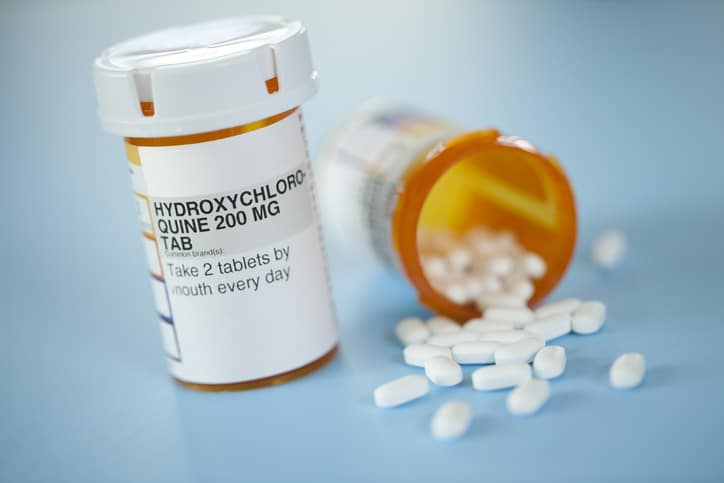The autoimmune disease lupus has been called “the cruel mystery” because no two cases are the same and diagnosing it can be difficult for patients with wildly divergent symptoms.
“I could have 10 patients all diagnosed with systemic lupus, however their symptoms are drastically different from one another,” says Leanne Dada, DO, rheumatologist on the medical staff at Methodist Dallas Medical Center.
An estimated 1.5 million Americans are living with lupus, with 16,000 new cases diagnosed each year. In up to half of those patients — and 80% of children with lupus — the disease attacks the kidneys (lupus nephritis), with end-stage renal disease a possibly fatal outcome.
Many patients report pain in their joints, more commonly hands, wrist, feet, and ankles. This could be due to inflammation in the joints, called arthritis. Others may present with a rash triggered by the sun. This rash may resemble a butterfly or animal bite, leading to its name (lupus is Latin for wolf).
The cause of lupus is unknown, but it’s thought to be rooted in various genetic abnormalities triggered by some unknown environmental exposure. Because it is such a heterogeneous disease, there is unlikely just a single cause.
That makes treating lupus just as challenging as diagnosing it, but there is hope that new medications and technology will help unravel this mystery.

WHO’S MOST AT RISK
Lupus can affect anyone, but 90% of those diagnosed are women.
Research hasn’t determined why women are nine times more likely than men to develop lupus, but the sex hormone estrogen may play a role, according to a 2024 study. As a result, many women experience symptoms before their menstrual period and during pregnancy, possibly because of a rise in their estrogen levels.
Family history can also be a factor, but most lupus patients don’t have a relative with the disease.
“There is thought to be a genetic predisposition or component,” Dr. Dada says. “So the risk factors could be more genetic.”
Race also plays a role: It’s two to three times more common among African-American women than whites. Hispanics, Native Americans, and Asian Americans are also at higher risk.
Finally, although lupus affects people of all ages, it’s most often diagnosed between the ages of 15 and 45.
That’s why diagnosing lupus is like putting together a jigsaw puzzle, forcing doctors to consider all of these risk factors and more:
- medical history
- blood tests for antibodies
- urine tests to check how your kidneys are working
- biopsies to check for tissue damage from inflammation.
SYMPTOMS AND TYPES
Inflammation is the tie that binds all cases because systemic lupus erythematosus (SLE) occurs when the immune system attacks the body’s connective tissues, organs, and nervous system.
“Lupus patients may have issues with their kidneys, liver, skin, joints, and nervous system,” Dr. Dada says. “The symptoms can be vast.”
And because it’s an autoimmune disease, the symptoms vary widely depending on the patient and the type of lupus they have, from arthritis and fevers to hair loss and skin lesions.
“There are forms of lupus that only involve the skin, are triggered by medications, and that are triggered by cancers,” Dr. Dada says. “These causes should be discussed with your rheumatologist.”
There are four main types of lupus:
Systemic lupus erythematosus (SLE), the most common form, can affect many parts of the body, including the kidneys, with mild or severe symptoms.
Cutaneous lupus causes a rash or sores that appear or worsen when the skin is exposed to sunlight.
Drug-induced lupus is caused by a reaction to some medicines, including drugs to treat high blood pressure or arrhythmia. The symptoms may start three to six months after starting the medicine but usually go away when a patient stops taking it.
Neonatal lupus, which is rare, affects newborns and is caused by certain antibodies that are passed from the parent to the baby.
The way lupus is treated depends on the type of lupus diagnosed, as well as the symptoms.

HOW IT’S TREATED
Lupus is treated with anti-inflammatory medications as well as disease modifying agents (DMARDs). Anti-malarial drugs like hydroxychloroquine (which made headlines during the pandemic) are used to prevent flare-ups.
So, too, can corticosteroids, most commonly prednisone, and immunosuppressants to help stop your immune system from self-destructing.
“Immunotherapy is used by rheumatologists to control lupus, as well as to prevent organ damage,” Dr. Dada says.
A healthy diet can also help reduce some symptoms of lupus and improve overall health.
“Some patients find relief with an anti-inflammatory diet,” Dr. Dada says, “and there is some evidence to support optimizing vitamin D supplementation in lupus patients.”

FINDING THE CAUSE
New research is giving scientists hope that they are closing in on the cause of lupus and, in so doing, may eventually find a cure.
“The technology and treatments are always advancing,” Dr. Dada says, “Multiple drug therapies are currently being investigated.”
Despite newfound evidence that an imbalance in white blood cells may cause the disease, Dr. Dada believes more research is necessary.
“As of now, the technology is not quite there,” she says.
Even so, new medications — including monoclonal antibodies like belimumab and anifrolumab and the immunosuppressant voclosporin — are being developed to improve the quality of life for patients living with lupus.
“It would be worth discussing again with your physician if you would like to revisit treatments,” Dr. Dada says.







